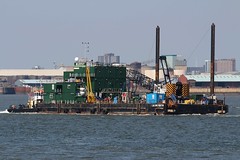
- See More About:
- Select Access
By Gerald Mason
Glass, Fiberglas, or plastic such as polyethylene, are materials used for greenhouse light; 20- to 30-inch panes are preferable. One of the most popular prefabs comes with 24- by 30-inch lights. If using glass, you need not buy Grade A quality. Double-thickness Grade B will suffice. Many old greenhouse books caution against using anything but Grade A, but Grade B has proved entirely practical.
Today a prefabricated unit somewhat over 8 feet wide and 14 feet long, constructed of first-grade redwood, aluminum, and double-strength glass, costs a little less than $1450.00, and this does not include the foundation.
An 8- by 10-foot lean-to, 11 feet high, costs about $300.00.
If you plan to assemble the material yourself, ask for prices on glass in box lots. Purchased this way, it costs much less, and you will have extra lights on hand in case of breakage. One of the large companies in my area sells glass in box lots for approximately 50 cents per light.
Glazing compound (putty) costs a few cents per pound.
By assembling your own materials, you can save 10 to 20 per cent of the cost of a prefabricated structure.
Upkeep and depreciation will depend on the original construction and the materials used. Greenhouses made of aluminum stand for years without seasonal replacement or repairs. Cypress and redwood, though the strongest types of wood for greenhouse use, still will show loosened screws and bolts as well as weather damage with the passage of time.
Basic Requirements
All greenhouses should offer plenty of light and good ventilation, and those planned for year-round operation also require efficient heating systems.
The glass and frame are actually only part of your greenhouse, which you count on to provide an artificial climate. Heater, ventilators, humidifiers, and perhaps a cooling system, must be considered in almost all greenhouse operations. Requirements will vary with each house, depending on location and nature of the crop or crops to be grown.
The foundation of the house must be strong enough to carry the whole weight and give support against wind and ice. You can use concrete, poured cement, cinder blocks, or Transite. All of these materials have good insulating qualities and will give protection against loss of heat.
The framework may be of aluminum, redwood, or cypress. Aluminum is originally more expensive than wood but involves little or no upkeep. You can purchase either aluminum or wood already cut and grooved for easy installation.
Before you build, get estimates for a number of greenhouse makes and sizes. Manufacturers are glad to send you their “literature.” Builders in your own area, and elsewhere, will furnish a price list for partial or complete building. Even your lumber company will help you compute costs of a suitable structure. At the same time, ask for estimates from plumbers for heating and cooling each of the greenhouse sizes under consideration. Before you settle for a slightly smaller size than you want, because of costs, remember that a greenhouse is an operating unit, and in the long run the cheapest to build is not always the most economical to run. Get plenty of advice.
(Check garden publication advertisements and, for local firms, refer to your classified telephone directory.) Look at other greenhouses, note the complaints of the owners as well as their satisfaction. Here is a general rule to guide you: Labor and material for the small greenhouse usually run higher than for a large one. Hence, the smaller the greenhouse, the higher the cost per square foot.
About the Author: For Free Original PLR Articles please visit: Free PLR Articles http://www.bestplrarticles.com
Source: isnare.com
Permanent Link: isnare.com/?aid=206386&ca=Gardening